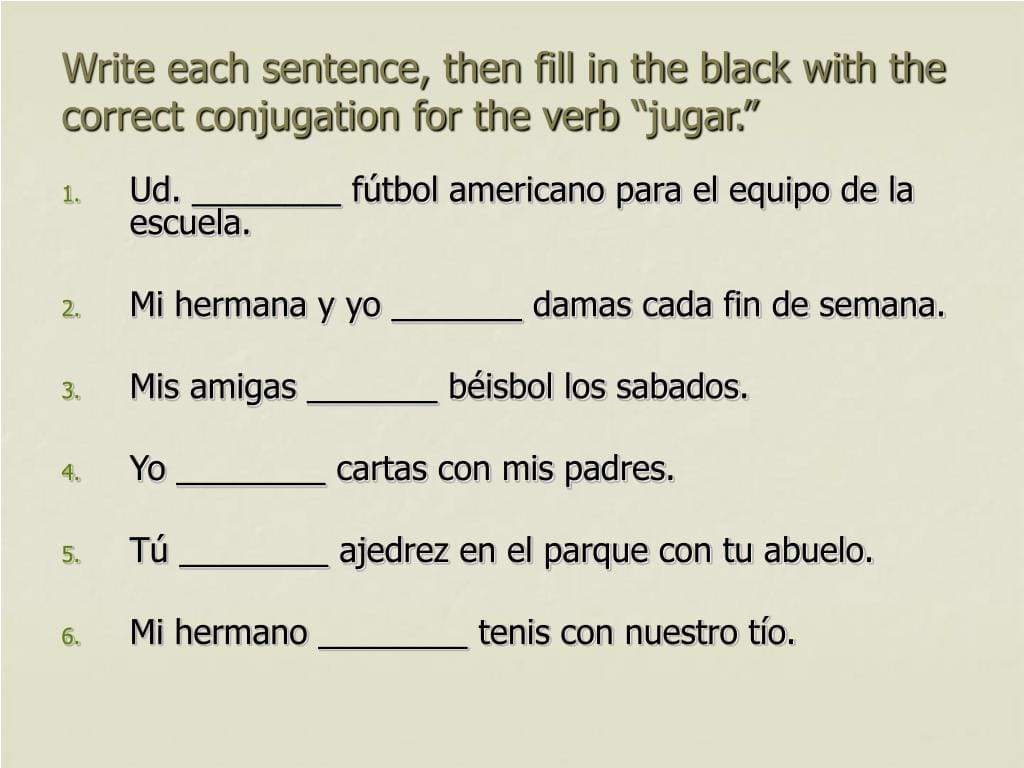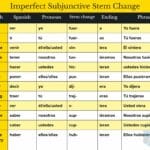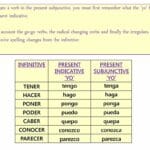Want to brush up on your Spanish verb conjugation skills? Check out our comprehensive guide on trabajer conjugation and master the art of forming sentences in both present and past tense. And if you’re looking to expand your vocabulary further, don’t miss our guide on sugerir conjugation to learn how to make suggestions and express your opinions effectively.
Understanding the Versatile Verb Tocar
The Spanish verb tocar is a true multi-tasker. Like a Swiss Army knife, it has a variety of uses, ranging from the concrete act of touching something to more abstract concepts like taking turns or being affected by a situation. This guide will equip you with the knowledge to use tocar correctly in any context.
Conjugating Tocar: A Step-by-Step Guide
Tocar is generally a regular -ar verb, but with a few important exceptions. Let’s explore the conjugations tense by tense, highlighting any irregularities along the way.
Present Tense: Expressing Current Actions
The present tense is the most common tense, used to describe actions happening now, habits, and general truths.
| Subject | Indicative | Subjunctive (Uncertainty/Possibility) |
|---|---|---|
| yo | toco (I touch/play) | toque |
| tú | tocas (You touch/play) | toques |
| él/ella/usted | toca (He/She/You touch/play) | toque |
| nosotros/nosotras | tocamos (We touch/play) | toquemos |
| vosotros/vosotras | tocáis (You all touch/play-Spain) | toquéis |
| ellos/ellas/ustedes | tocan (They/You all touch/play) | toquen |
Notice the “c” to “qu” shift in the present subjunctive, suggesting a level of uncertainty.
Past Tense: Recalling Past Events
Spanish has two main past tenses for tocar: the preterite and the imperfect.
Preterite Tense: Completed Actions
The preterite tense describes actions completed in the past.
| Subject | Preterite |
|---|---|
| yo | toqué (I touched/played) |
| tú | tocaste (You touched/played) |
| él/ella/usted | tocó (He/She/You touched/played) |
| nosotros/nosotras | tocamos (We touched/played) |
| vosotros/vosotras | tocasteis (You all touched/played-Spain) |
| ellos/ellas/ustedes | tocaron (They/You all touched/played) |
Note the “c” to “qu” shift for the yo form in the preterite.
Imperfect Tense: Ongoing or Habitual Past Actions
The imperfect tense describes actions that were ongoing or habitual in the past.
| Subject | Imperfect |
|---|---|
| yo | tocaba (I used to touch/play/was touching/playing) |
| tú | tocabas (You used to touch/play/were touching/playing) |
| él/ella/usted | tocaba (He/She/You used to touch/play/was touching/playing) |
| nosotros/nosotras | tocábamos (We used to touch/play/were touching/playing) |
| vosotros/vosotras | tocabais (You all used to touch/play/were touching/playing-Spain) |
| ellos/ellas/ustedes | tocaban (They/You all used to touch/play/were touching/playing) |
Future Tense: Talking about What Will Happen
The future tense describes actions that will occur in the future.
| Subject | Future | Conditional (Hypothetical) |
|---|---|---|
| yo | tocaré (I will touch/play) | tocaría (I would touch/play) |
| tú | tocarás (You will touch/play) | tocarías (You would touch/play) |
| él/ella/usted | tocará (He/She/You will touch/play) | tocaría (He/She/You would touch/play) |
| nosotros/nosotras | tocaremos (We will touch/play) | tocaríamos (We would touch/play) |
| vosotros/vosotras | tocaréis (You all will touch/play-Spain) | tocaríais (You all would touch/play) |
| ellos/ellas/ustedes | tocarán (They/You all will touch/play) | tocarían (They/You all would touch/play) |
Present Perfect Tense: Bridging Past and Present
The present perfect describes past actions with a connection to the present. It’s formed with the present tense of haber and the past participle tocado.
| Pronoun | Haber (Present) | Tocado (Past Participle) | Full Conjugation | English Translation |
|---|---|---|---|---|
| Yo | he | tocado | he tocado | I have touched/played |
| Tú | has | tocado | has tocado | You have touched/played |
| Él/Ella/Usted | ha | tocado | ha tocado | He/She/You has touched/played |
| Nosotros/Nosotras | hemos | tocado | hemos tocado | We have touched/played |
| Vosotros/Vosotras | habéis | tocado | habéis tocado | You have touched/played |
| Ellos/Ellas/Ustedes | han | tocado | han tocado | They/You have touched/played |
For instance, “Niños, ¿quién ha tocado esta pared?” (Children, who has touched this wall?) uses the present perfect, implying the recent nature of the action and the current relevance of finding the culprit.
Imperative Mood: Giving Commands
The imperative mood is used to give commands.
- tú: toca (Touch/Play!)
- nosotros/nosotras: toquemos (Let’s touch/play!)
- vosotros/vosotras: tocad (You all touch/play! – Spain)
Decoding the Multiple Meanings of Tocar
The meaning of tocar changes depending on the context. Here are some common interpretations:
- To touch (physically): Me toco el brazo. (I touch my arm.)
- To play (a musical instrument): Él toca el piano muy bien. (He plays the piano very well.) Another example: Jesús toca la guitarra y el piano. (Jesus plays both the guitar and the piano).
- To knock: Alguien está tocando la puerta. (Someone is knocking at the door.)
- To ring (a bell): Tocaron la campana para la cena. (They rang the bell for dinner.)
- To be someone’s turn: Me toca trabajar. (It’s my turn to work.)
- To concern or affect: Este asunto me toca personalmente. (This matter concerns me personally.)
- To win the lottery: ¡Me tocó la lotería! (I won the lottery!). This use implies something happening by chance or luck.
Idiomatic Expressions with Tocar
Tocar appears in several idiomatic expressions, adding depth and nuance to the language.
- Tocar el piano (figuratively): To be very skilled at something.
- Tocar fondo: To hit rock bottom.
- Tocar de oído: To play music by ear or to improvise.
Mastering Tocar: Tips and Common Pitfalls
While tocar is mostly regular, the “c” to “qu” shift in the preterite and present subjunctive can be tricky. Practice is key to mastering these forms. Also, remember that context is crucial for understanding the intended meaning of tocar. Pay attention to the surrounding words to avoid misinterpretations. Ongoing linguistic research continues to explore the nuances of tocar, particularly its more figurative and idiomatic uses. As with any language learning, continued exploration and practice are essential for achieving fluency and understanding.
- Unveiling Oklahoma’s Flag: History & Symbolism - March 28, 2025
- Explore Arkansas Map: Cities, Towns, Rivers & Mountains Now - March 28, 2025
- Discover Northern Pakistan’s Hidden Gems: Your Ultimate Guide - March 27, 2025

















1 thought on “Tocar Conjugation: A Comprehensive Guide for Spanish Learners”
Comments are closed.